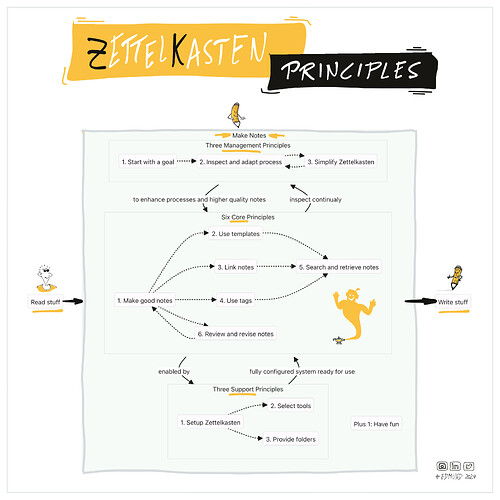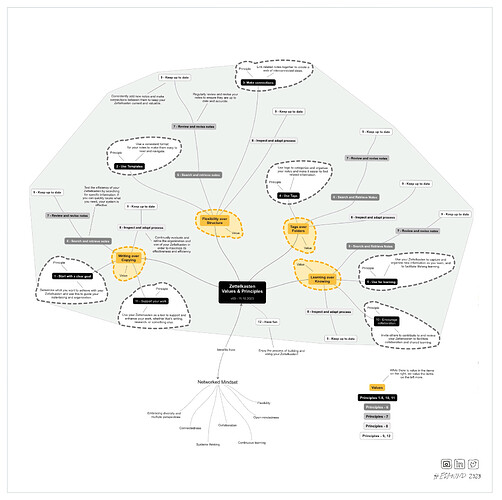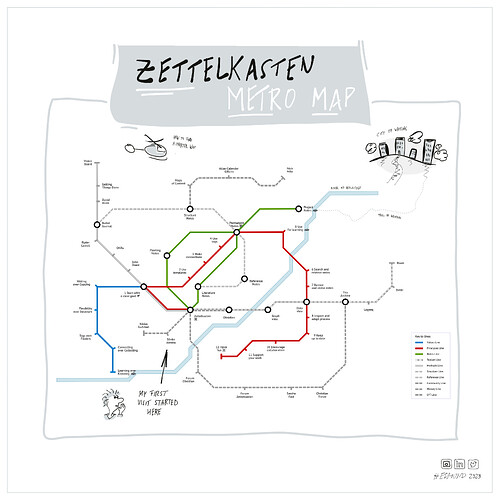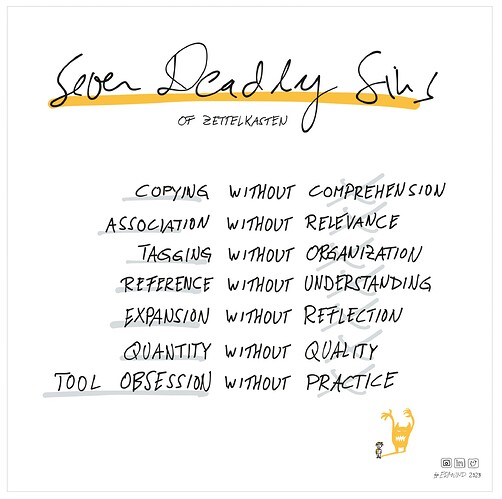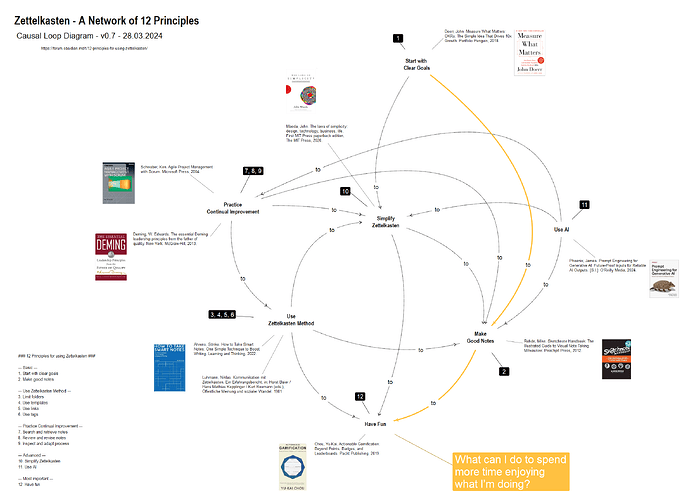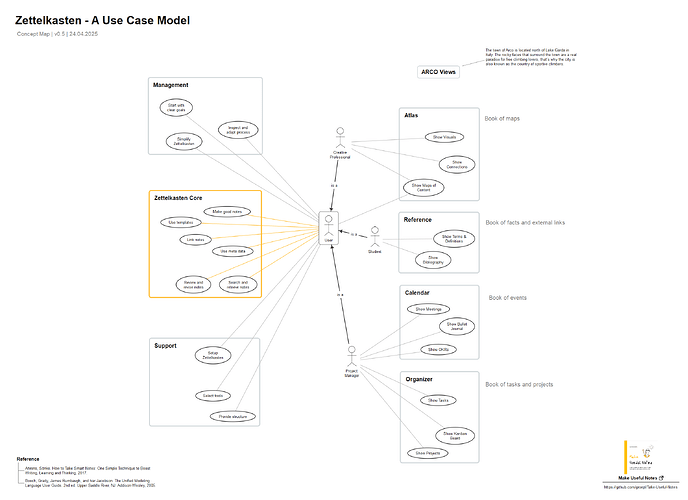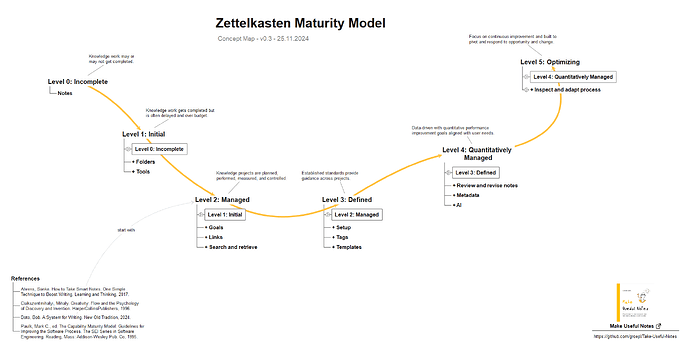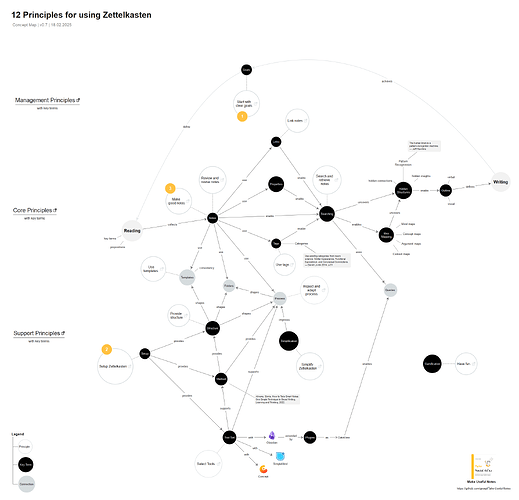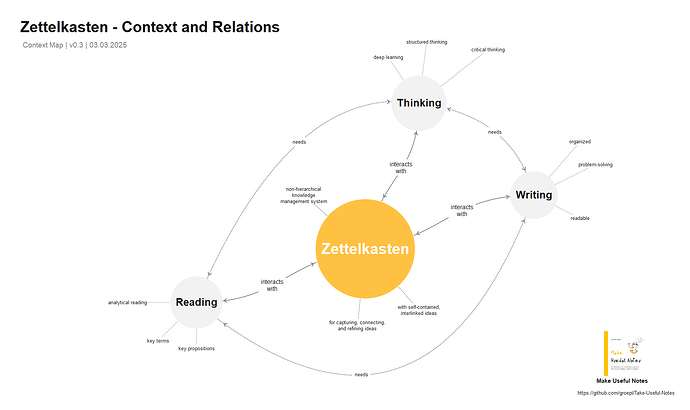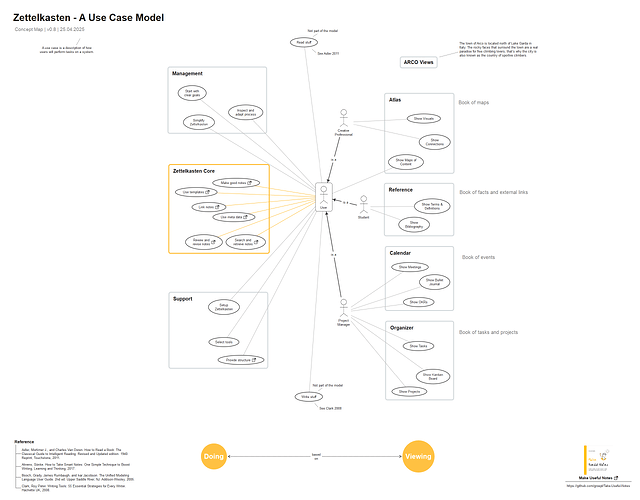Figure: 12 Zettelkasten Principles
What are the basic principles, when working with a Zettelkasten? Here’s my answer structured to support a simple process:
A well-structured Zettelkasten relies on clear management principles to ensure efficiency and usability. It begins with defining specific goals, as a clear purpose guides note-taking and organization. Continual evaluation of the process allows for improvements that enhance effectiveness, while applying simplicity ensures that the system remains practical and user-friendly.
The core of the Zettelkasten method lies in high-quality notes. Writing a single note per idea, using a consistent template, and linking related notes create a dynamic network of knowledge. Tags and structured searchability further improve organization, making it easier to retrieve information when needed. To keep the system relevant, regularly reviewing and refining notes is essential.
Supporting principles focus on setting up the Zettelkasten in a way that suits the user’s workflow. The selection of appropriate tools, from AI-supported collaboration to structured folder systems, enhances efficiency while maintaining simplicity. Finally, beyond functionality, engagement with the Zettelkasten should be enjoyable—when knowledge work is rewarding, maintaining the system becomes effortless.
Three Management Principles
-
Start with clear goals
Determine what you want to achieve with your Zettelkasten and use this to guide your note-taking and organization. -
Inspect and adapt process
Continually evaluate and refine the organization and use of your Zettelkasten in order to maximize its effectiveness and efficiency. -
Simplify Zettelkasten
Apply the rules of simplicity to improve and ensure the usability and effectiveness of your Zettelkasten so that it meets your needs and provides a positive knowledge management and note-taking experience.
Six Core Principles
-
Make good notes
Write exactly one note for each idea and write as if you were writing for someone else. -
Use templates
Consistently use a consistent format for your notes to make them easy to read and navigate. -
Link notes
Link related notes together to create a web of interconnected ideas. -
Use meta data
Use tags to categorize and organize your notes and make it easier to find related information. -
Search and retrieve notes
Test the efficiency of your Zettelkasten by searching for specific information. If you can quickly locate what you need, your system is effective. -
Review and revise notes
Regularly review and revise your notes to ensure they are up to date and accurate.
Three Support Principles
-
Setup Zettelkasten
Find your appropriate set-up level to start with. -
Select tools
Invite AI to contribute to and review your Zettelkasten to facilitate collaboration and shared learning. -
Provide structure
Folders are best for clustering notes within the structure of your process. Keep your process as simple as possible.
Plus One
- Have fun
Enjoy the process of building and using your Zettelkasten!
Which principles do you miss and should be added? Which are not so important?
